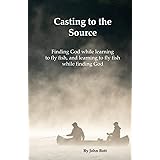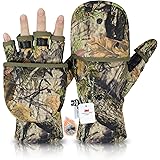Every angler knows that a smoother, more efficient, and cost-effective fishing trip can make all the difference. In fact, many seasoned fishermen have saved hundreds of dollars annually simply by implementing smart hacks for gear maintenance, bait preservation, and on-the-water convenience. The accompanying video from Rad Reeling Fishing offers a treasure trove of clever fishing tips and tricks, designed to elevate your angling adventures. Let’s delve deeper into these ingenious solutions, exploring how each hack can enhance your experience and even save you money.
Mastering Your Line & Knot Tying for Peak Performance
One of the most frequent frustrations for fishermen involves line management and knot tying. The right techniques can drastically improve your efficiency and the strength of your setup.
Effortless Line Spooling with a Double Overhand & Slip Knot
Starting with a fresh line on your reel doesn’t have to be a struggle. The video demonstrates a simple yet incredibly effective method: begin with a double overhand knot on the tag end of your line, pulling it tight. Next, tie a slip knot onto the main line, creating a loop. This loop then goes over your reel’s spool. As you tighten the slip knot, it cinches down, securing the line cleanly. This technique not only ensures a tight, even start but also makes line removal remarkably easy when it’s time to respool.
The Braided Line Crimp Weight Advantage
Braided line, while incredibly strong, can be notoriously difficult to handle, especially in windy conditions or if you have dexterity challenges like shaky hands or arthritis. A brilliant hack involves crimping a small split shot weight onto the very end of your braided line. This small weight provides a tangible grip, making it significantly easier to manage the fine braid when tying complex knots like FG knots, uni knots, Allbright knots, or clinch knots. It acts as a counterweight, stabilizing the line and allowing you to cinch down knots more securely, leading to stronger, more reliable connections between your braided main line and monofilament or fluorocarbon leaders.
Super Glue: Your Knot’s Best Friend
Even the best-tied knots, especially with slippery braided line or fluorocarbon, can have a tendency to slip over time. A tiny dab of super glue on your finished knot can provide an impenetrable seal. The video suggests this for critical connections like FG knots or uni-to-uni knots, and even for securing snell knots on hooks. A quick drop ensures that once the knot is cinched and cured, it will never come apart, giving you ultimate confidence in your tackle.
Innovative Line Storage for Threaded Rods
After a day of fishing, or if you’re pre-rigging your rod, reeling your line all the way back into the spool and re-threading every eye later is tedious. The simple trick of creating a partial overhand knot (a single “bow” loop) at the end of your line, then reeling it tight to your rod, offers a fast solution. This creates a temporary, secure attachment that can be effortlessly undone with a quick pull of the tag end when you’re ready to fish again. This is particularly useful when moving between spots or storing your rods.
Leader Line Organization with Koozie Cup Holders
Loose spools of leader line are a recipe for tangles in your tackle bag. The ingenious solution shown in the video, shared by Captain Todd, is to store your leader spools (like 80, 40, and 60-pound test) inside standard foam koozie cup holders. The koozie provides just enough friction and tension against the spool to keep the loose end of the line securely in place. You can pull out precisely the amount of line you need, cut it, and the remaining line stays neatly contained, preventing frustrating knots and wasted leader material.
Smart Gear Organization & Maintenance for Longevity
Keeping your fishing gear organized and well-maintained is crucial for its longevity and your sanity on the water. These hacks offer practical ways to manage your equipment.
Velcro Strips: The Ultimate Gear Tamers
Small, inexpensive Velcro strips prove incredibly versatile. For multi-hook rigs with a sinker at the bottom, the sinker often swings freely during transport, leading to tangles. By simply wrapping a Velcro strip around the sinker and securing it to the rod, you prevent this annoying flopping. Furthermore, these strips are perfect for binding multiple rods together during transport, whether in a truck bed or boat, preventing them from scattering and becoming damaged by wind or movement. They cost little but save significant hassle.
Aerator Attachment for Live Bait Buckets
Keeping bait alive, especially during a long drive to your fishing spot, is critical. Attaching an aerator to a bait bucket can be clumsy. A zip tie threaded through the bucket’s existing holes provides a snug, secure attachment point for your aerator. This allows you to carry the entire setup easily by the bucket handle, ensuring your minnows or shrimp stay lively and ready for action.
Duct Tape for Enhanced Comfort
Carrying a five-gallon bucket full of water and bait can quickly become uncomfortable, with thin plastic handles digging into your hands. A simple wrap of duct tape around the handle creates a wider, softer grip, making long carries significantly more comfortable. It’s not the prettiest solution, but its practicality is undeniable.
Repurposing Braided Nylon Rope: The “Chinese Finger Trap” Splice
Don’t discard old cast nets! The braided nylon rope from a discarded net is a valuable resource. After cutting and melting the end to prevent fraying, this hollow rope can be seamlessly spliced to itself or other similar ropes using a “Chinese finger trap” method. By pushing the pointed tag end into the hollow core of the main line and bunching up the main line, the tag end slips inside, creating an incredibly strong, knot-free connection that tightens under tension. This is perfect for creating custom bucket ropes (4-8 feet long) to retrieve water from seawalls, or for mooring small kayaks and canoes without bulky knots.
Cooling Towels: Your Secret Weapon Against Summer Heat
Long days on the water, especially in summer, can be exhausting. A cooling towel, simply soaked in cold water, wrung out, and placed around your neck, offers immediate and lasting relief from the heat. Re-wetting it in your cooler ensures continuous cooling, allowing you to stay out longer and fish more comfortably.
Achieving Razor-Sharp Knives with Household Items
A dull knife is a dangerous knife, and sharpening often seems like a chore. The video reveals several brilliant methods for achieving a razor-sharp edge, even without specialized tools.
- Stropping with Leather: After initial sharpening with a stone or pull-through sharpener, an old leather belt or wallet can be used as a strop. By pulling the blade across the leather at a slight angle, you effectively polish the edge, removing microscopic burrs and refining the sharpness to a razor’s keenness. This small extra step makes a huge difference in cutting performance.
- Glass Edge Sharpening: In a pinch, the unglazed edge of a ceramic mixing bowl or even a car door window can serve as an emergency sharpening surface. The fine abrasive quality of the glass or ceramic can put a usable edge back on a dull knife, ensuring you’re never caught off guard at the fillet table.
The Indispensable Multi-Tool
A multi-tool is a non-negotiable item for any tackle bag. It’s a compact emergency kit containing pliers, screwdrivers, knives, and more. Forgetting your needle-nose pliers or needing a quick fix for a reel often leaves anglers stranded. A multi-tool ensures you always have a basic set of implements to get out of a pinch, making minor repairs or adjustments on the fly a breeze. Its reasonable price makes it an investment that pays off quickly.
Bait, Catch & Cost-Saving Innovations for Smarter Fishing
Saving money and enhancing your bait and catch management can make your fishing more enjoyable and sustainable.
Using Your Wallet to Cinch Braided Knots
Pulling braided line tight with bare hands can cause painful cuts. An old leather wallet provides a perfect buffer. By wrapping the braided line around the soft leather, you gain a superior grip, allowing you to cinch down knots with maximum pressure without damaging your hands or the line itself. The wallet’s pliability grips the line securely, making for incredibly tight and reliable knots.
Eliminating Line Memory & Curls with Leather
Monofilament and fluorocarbon lines, especially heavier leader material, can develop frustrating “memory” or curls. To straighten these out, rig your line, hook it to an eye on your rod, and pull it taut. Then, take a piece of leather (like from an old belt or wallet), wrap it around the line, apply firm pressure, and run it up and down the length of the line. The friction generated by the leather against the line, combined with the applied tension, effectively removes those unwanted curls, leaving your line straight and ready to perform.
Budget-Friendly Reel Lubrication
While specialized reel grease and oil are ideal, sometimes you’re in a bind. For basic maintenance and lubrication of your reel’s internal gears, common household items can serve as a temporary alternative. Petroleum jelly (Vaseline) can effectively grease gears, applied with a Q-tip. For oiling, common cooking oils like canola or virgin olive oil can reduce friction in a pinch. While not a long-term solution, these readily available substances can keep your reels running smoothly when you don’t have access to dedicated products.
Efficiently Cutting Frozen Squid Bait
Squid is an excellent bait, but cutting it into small pieces for fish like pinfish can be messy and challenging. The trick is to cut it while it’s still frozen solid. Pull a frozen squid from the freezer, cut off a chunk, and then easily slice it into small, uniform pieces for bait. This not only makes the process cleaner and faster but also ensures you get consistent bait sizes without the slimy struggle of thawed squid.
DIY Ice Packs: Saving Hundreds on the Water
Instead of constantly buying bags of ice, which can quickly add up to hundreds of dollars annually, freeze large plastic bottles of water. These DIY ice packs serve a dual purpose: they keep your catch cold in your cooler, and as they thaw, they provide fresh, cold drinking water. This simple habit drastically reduces costs and provides a convenient source of hydration on long fishing trips, especially in a kayak or boat.
Hose-Free Gear Cleaning for Apartment Dwellers
Living in an apartment without hose access doesn’t mean neglecting your saltwater gear. Reels can be easily rinsed under a kitchen sink faucet to remove corrosive salt. For rods, a damp cloth is sufficient. Simply wipe down the rod blanks and carefully clean the inside of each guide eye to remove salty residue, preventing corrosion and extending the life of your equipment. Regular cleaning, even with minimal resources, is key to preserving your gear.
White Vinegar: The Affordable Rust Remover
Rust is the enemy of fishing tools. White vinegar, incredibly inexpensive (e.g., 64 ounces for under a dollar), is a powerful rust remover. Submerging rusty pliers, knives, or other metal tools in vinegar for a few hours or overnight will dissolve the rust, freeing up bound parts and making cleaning with steel wool or sandpaper effortless. This cost-effective solution revitalizes old tools and keeps new ones in top condition.
Repurposing for Ultimate Fishing Value
The video shares several insights into repurposing everyday items and old gear, demonstrating that smart anglers are also savvy savers:
- Dollar Tree Mesh Laundry Bags: These make excellent, cheap chum bags.
- Grocery Store Mesh Fruit Bags: The mesh bags from grapefruit, oranges, or tangerines are perfect for creating smaller, homemade chum bags.
- Old Fishing Rods: Don’t throw away broken rods. Cut off and save the eyes (guides). Inevitably, a guide on one of your working rods will break, and having spares saves you money and a trip to the tackle shop.
- Old Lures: Keep worn or broken lures for their component parts (hooks, split rings, blades, weights). These can be used to repair or customize other lures, proving especially useful for DIY projects like Pompano teasers. In fact, investing less than $30 in materials can allow you to tie thousands of dollars worth of Pompano teasers yourself, a significant saving for any avid angler.
By integrating these practical fishing tips, hacks, and tricks, you’ll not only make your time on the water more enjoyable and productive but also extend the life of your gear and save money in the long run.








